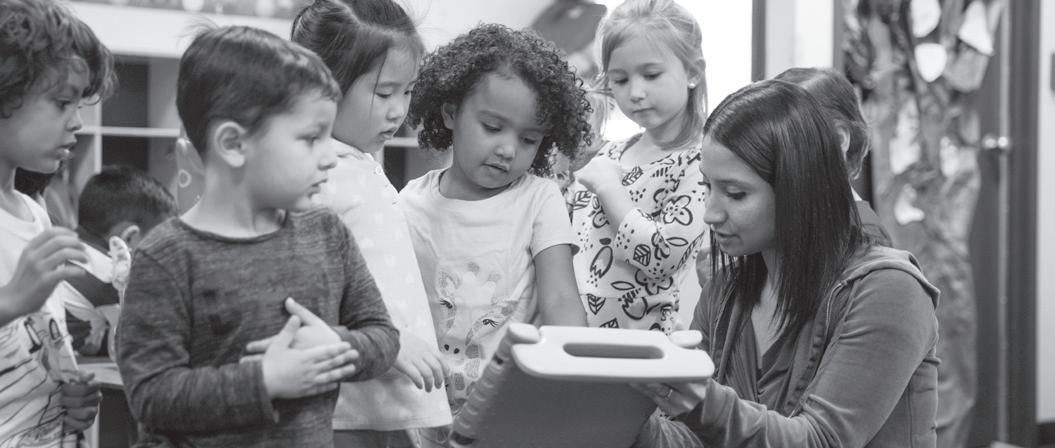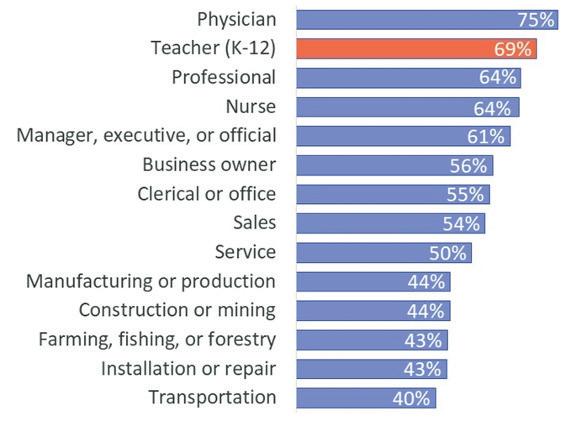Navigating Your First Year of Teaching
Building Positive Parent Rapport Dr. Gina Blackburn Professor of Education, Grove City College, Pennsylvania
O
ne of my greatest fears as a new teacher was initiating parent contact. I was very aware of the large age gap between my students’ parents and me, and that was intimidating. After a few calls home, though, I found that parents and I had something in common: we wanted their children to succeed. From my experience, here are five easy steps I have found effective in building a positive relationship with parents. Introduce yourself Before you even know their children, introduce yourself to the families. You can make it formal by sending letters in the mail or more casual through emails. Tell a little about yourself and your family while explaining what students can expect from your class. Make sure your letter is upbeat and shows your personality. Get the families excited about your class. Commit to "Five a Days" Challenge yourself to call five parents a day for as many days as it takes until you get through all your students’ families. Give yourself a reward once you have made it through all your rosters. (Middle and high school teachers get an extra big award since they typically have well over 100 students!) These can be short conversations; even leaving a message on voicemail counts toward your “five a day.” Just tell the parents something positive about their child. Let them know what the student’s strengths are. This approach will pay dividends later in the year especially when you have to call the parents to share a problem. Believe me, it is well worth your time! In fact, you may be the only teacher to have ever called to say something kind about their child. Think about that for a minute. You may be the only teacher to tell the parents their child is great.
Maximize Parent-Teacher Conferences If you have used these strategies effectively, parent teacher conferences will be a positive experience for both you and the parents. Remember to always talk about the positives and potential you see in their child before sharing any problems. Also, when you share those problem areas, use language that exemplifies a growth mindset. For example, instead of, “Jake is talking too much in my class,” you could say, “I love how social Jake is. That will serve him well throughout life. We are working on knowing when it is helpful and appropriate to talk with his peers and when it is a distraction from his work.” Finally, keep in mind that the parents will not necessarily be traditional moms and dads. They can be foster parents, grandparents, same sex couples, aunts, uncles, and even older brothers or sisters. They all have two things in common: they love their children, and they deserve our respect. The bottom line in working with parents is understanding that you are learning from them as much as they are learning from you. Parents are your students’ first teachers, and they are the ones who love them best. Prioritize these relationships and your relationships with your students will be even stronger.
Keep Communicating
In the age of technology, there is no reason not to keep parents informed about what is happening in your classroom. Of course, most schools have systems for reporting grades and homework electronically but go the extra mile and send a weekly email or newsletter, so parents can visualize all the wonderful things that are happening in your classroom. By emailing them weekly, you are also creating an easy way for parents to hit “reply” with any questions they may have. The lines of communication should be constantly open. Include All Families Remember that not all your families will speak English. Find out from your administrators or even by asking the ESL teachers in your building which of your parents may need translation services. If families are from another country, they may require some help understanding the American educational system. For example, grading, behavioral expectations, and learning experiences may all be different for their children compared to their homeland. Making sure your families understand the way American schools operate will help them communicate these new expectations to their children. Talking Points is a useful app for communicating with parents who speak other languages. You can say what you want the parents to know, and the app converts your communication to the parents’ language. They can also communicate back with you using their language, which will translate into English. Go to https://app. talkingpts.org to sign up.
92 American Association for Employment in Education
• $54,665 Starting Salary • New Teacher Academy • Mentor Program • Professional Development • Relocation Stipend • 5 Local Universities • Classroom Technology • 5 High, 8 Middle and 28 Elementary Schools
canyonsdistrict.org
• 5 National Parks nearby • Skiing, Hiking, Mountain Biking • Low-or No-cost Endorsement Programs
Scan here to see why CSD is the place to be































